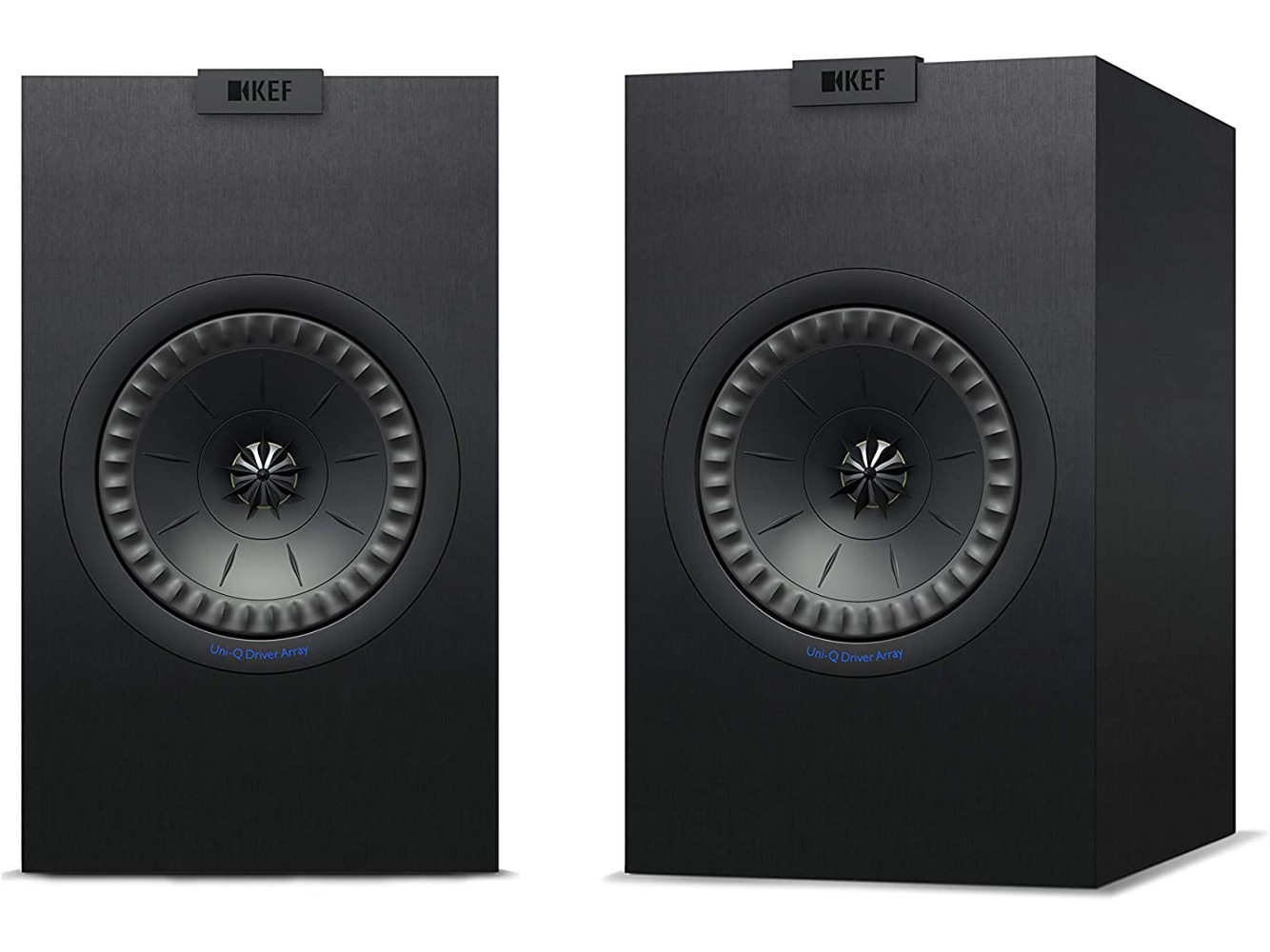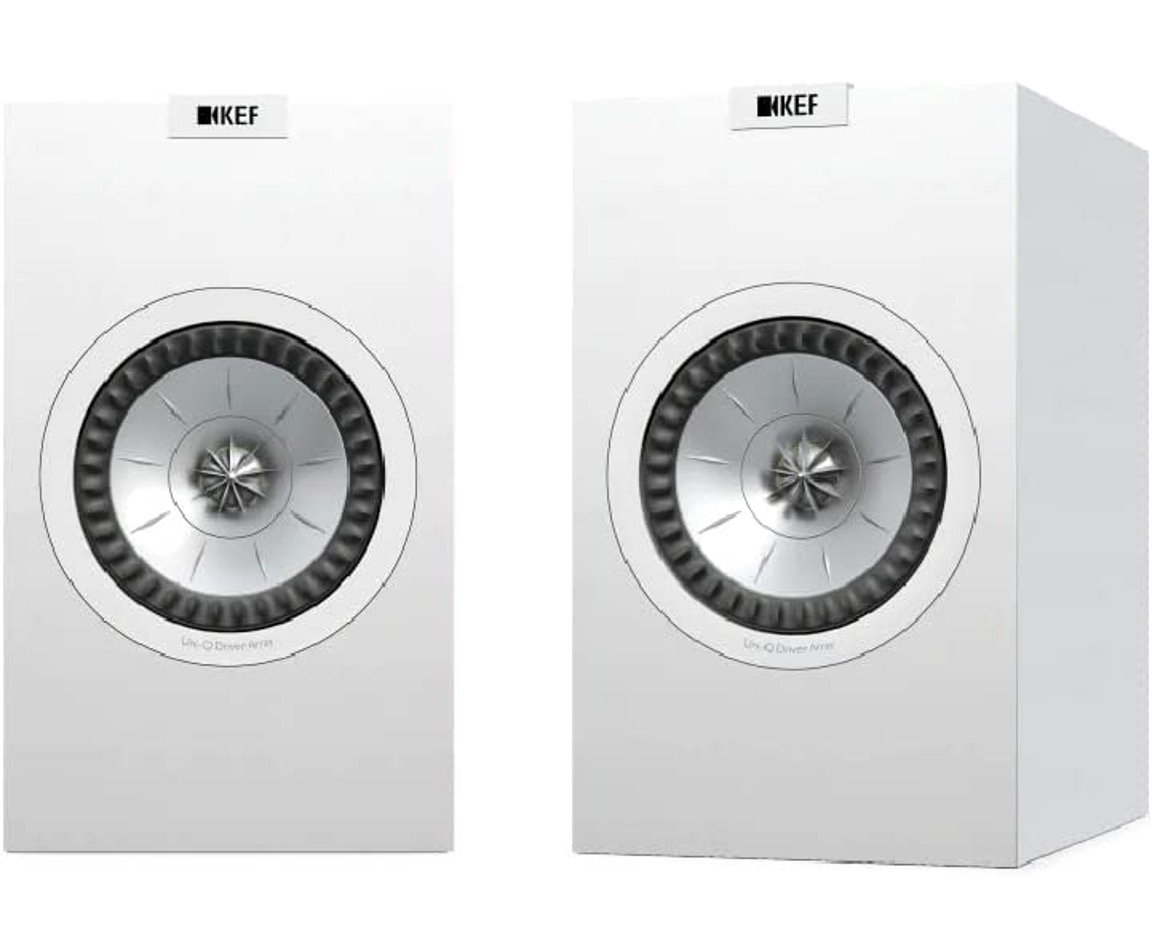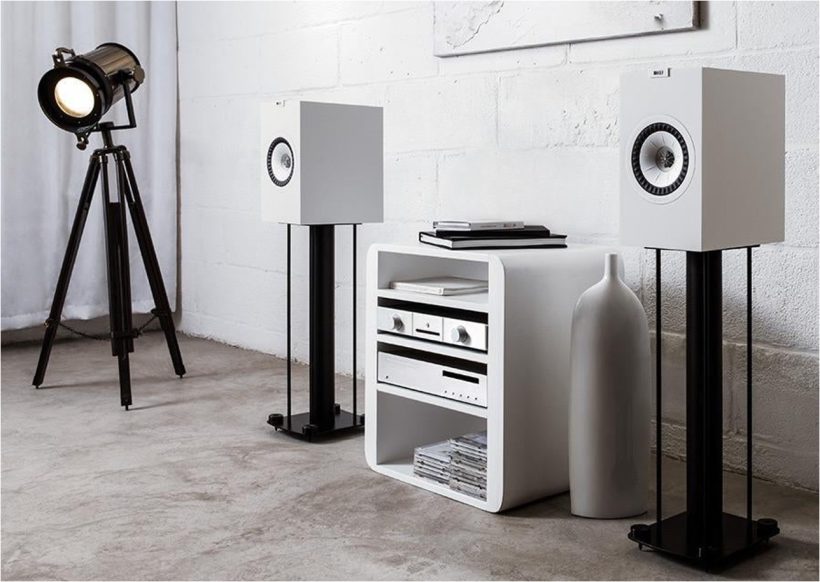In this review, we compare the KEF Q350 and Q150 speakers side by side to determine which one has the better sound performance. Both the KEF Q350 and Q150 comes with KEF’s Uni-Q driver array with a new cabinet design with sleek new finishes. These speakers also come with upgraded crossovers to provide cleaner and more accurate bass response, and they deliver really good sound performance when connected to a digital amplifier. Both speakers also feature the front port being moved to the back to reduce internal resonances and improve audio clarity.
In terms of specs, the KEF Q150 has a slightly wider frequency response of 51 to 28 kHz compared to the KEF Q350 which has 63 – 28 kHz. The Q350s are slightly larger than the Q150 and come with a slighter large dome woofer (6.5” compared to the Q150’s 5.25” woofer) for deeper bass response. Both speakers have an 8 ohm impedance with a power range of between 10 – 120 watts, and they virtually have the same level of sensitivity at 87 dB (Q350) and 86 dB (Q150). Both speakers feature a 2-way design and 11th generation Uni-Q driver that delivers spacious audio sound performance.

Sound Performance
When we compared the sound performance of the KEF Q350s with the Q150s, we felt that the Q350s are better able to produce the mid-bass frequencies and has a warmer sound signature due to the larger woofer design. By contrast, the Q150 has a more neutral and transparent sound signature that emphasizes the highs and treble ranges; you get plenty of sparkle with the Q150 in female vocals that you do not get with the Q350 speakers.
In terms of midrange, the Q350 driver is slightly larger and has more surface area to handle the mid-range with a wider soundstage. You can hear the difference in soundstage between the larger Q350 speakers and the Q150 – the Q350 feels more spacious and detailed, and you can hear the separation between the left and right channels clearly. Instrumental notes on the Q350 sound more lifelike and enganging, and there is a certain level of depth and substance to the sound due to the larger woofer.
Having said that, we did find the Q150 speakers much better for vocals (and particularly female vocals). They sound clearer and the details are easier to parse out – the highs and treble ranges have pristine clarity and you can really hear all the details in the music without any distortion.
One of the things that we really liked about the KEF Q150 is the level of sparkle that they have for vocals – the fine details and imaging seem more carefully crafted and did not get lost in the midrange – which the Q350s have a tendency to do. We felt that the Q350s have more midbass and smoothness, but are somewhat lacking in the highs and lacks the lustre in the treble ranges that the Q150s have to offer. The soundstage and imaging between the Q350 and Q150 is virtually similar, with the Q350 providing a slightly larger soundstage due to the larger Uni-driver configuration.
Both the Q350 and Q150 speakers cover the full frequency range down to 40 Hz, with the Q350s having more low-mid bass from the larger driver. The Q350s sounds detailed and warm, with similar characteristics to the Q150 but slightly warmer and has more depth on the lower frequency ranges. The Q150 speakers have a more forward leaning sound signature with better treble ranges, and they sound better when you turn up the volume on these speakers.
If you prefer a speaker that sounds cleaner with more balanced sound, the KEF Q150s are definitely the ones you should go for. For those who prefer a more warm sound signature with more low-mid bass performance, the Q350s are definitely the better option. The Q350 is slightly bigger than the Q150 speakers and have better soundstage and separation, but lacks the clarity and sparkle than the Q150 has especially for vocals.

Soundstage
When it comes to soundstage, both the Q350 and Q150 speakers deliver superb soundstage with detailed separation. We were incredibly impressed by how well these speakers provide the level of detail and realism that makes the music sound engaging. You can hear all the details in the music including instrumental notes and get a sense of where the vocalist is standing on the stage. You can hear the reverb of the symphony hall and get a sense of how large the orchestra is. No matter where you place the speakers, the soundstage is on point and gets extremely wide.
Bass
The Q350s definitely have better bass due to their larger woofer and they can provide better bass response down to 45 Hz. The bass feels clean and clear and feels present and punchy, but does not bleed into the midrange frequencies. The Q350s definitely have a more bass-leaning sound signature and sounds warmer than the Q150s – the sound great for EDM, rock and hip-hop music genres and you get good depth with punchy beats with the Q350s. We did find that you would need to push up the volume on the Q350 speakers to get more bass as its starts to level off at lower volume levels. Both the Q350 and Q150s can handle high volume levels without any distortion and maintain crystal clear sound.
The Verdict?
If we had to choose between the KEF Q350 and the KEF Q150 speakers, we would go for the Q150 speakers. The Q150 do not cost as much as the Q350 speakers, and deliver better treble ranges and highs which we really enjoyed while listening to music. They have sparkling treble ranges and brilliant vocal performances that make vocals feel lifelike and realistic – the sparkling quality is something that you do not get with the KEF Q350s. The Q350s have a warmer sound signature and slightly better bass due to their larger woofers, but they lack the lustre and sparkle in the highs that the Q150s have to offer. For Hi-Fi setups, we recommend going with the Q150 speakers for cost savings and adding a dedicated subwoofer like the KEF Kube 10b to provide dynamic bass response for the overall sound system.
Be sure to check out our top picks for the best KEF speakers of all time if you are setting up your own Hi-Fi system at home.

